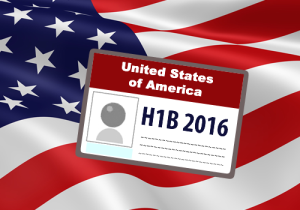And We Broke a Record
USCIS announced that it has received a record number of H-1B applications for Fiscal Year 2016. Over 233,000 applications were filed by employers petitioning for prospective foreign national employees. Some of those prospective employees are actually already in the employ of their companies, but they need the H-1B to continue their work authorization. There is a 65,000 cap on H-1B visas, plus an additional 20,000 visas that are reserved for individuals with Master’s degrees from a United States institution of higher learning. For example, an engineer with a Master’s degree from Carnegie Mellon University would be placed in the Master’s lottery first, whereas an engineer with a Bachelor’s degree from the University of Pittsburgh would be subject to the 65,000 cap.
USCIS conducted the lottery yesterday. This means that nearly 150,000 visa applicants will be rejected without consideration.
The H-1B visa is a critical aspect of our immigration employment system. To obtain a visa, the occupation in question must be a specialty occupation, and it must require a college degree or the equivalent thereof to perform the duties of the occupation. It also requires an employer to be the petitioner and pay fees that the employer would not have to pay for an American worker. They are highly sought out because they afford up to six years of status, as well as an opportunity for a Green Card.
H-1B applications are filed in the first week of April in anticipation of the beginning of the Fiscal Year in October. Employers and prospective H-1B employees nervously wait for whether they are selected in the lottery for about a month, as notices will begin going out in the middle of May.
There is a 36% of being selected for the lottery. Technology and immigration groups clamor year after year for improvements to the H-1B visa, especially in terms of raising the cap. Their champions in Congress push for bills like Innovation Squared, but they rarely make it out of committee. H-1B opposition emanates from the fear that foreign nationals are snatching American jobs from American citizens and permanent residents. The rebuttal often cited by H-1B proponents is that the economy is dynamic and H-1B jobs are “job-creating.”
USCIS will continue to accept H-1B applications for the following purposes:
- Extend the amount of time for an H-1B worker (6 years is generally max, except for I-140 filed or pending)
- Change the terms of employment for current H-1B workers (transferring areas)
- Allows current H-1B workers to change employers
- Allows current H-1B workers to work concurrently in a second H-1B position
- Statutorily cap-exempt employers (universities, university-affiliated)
